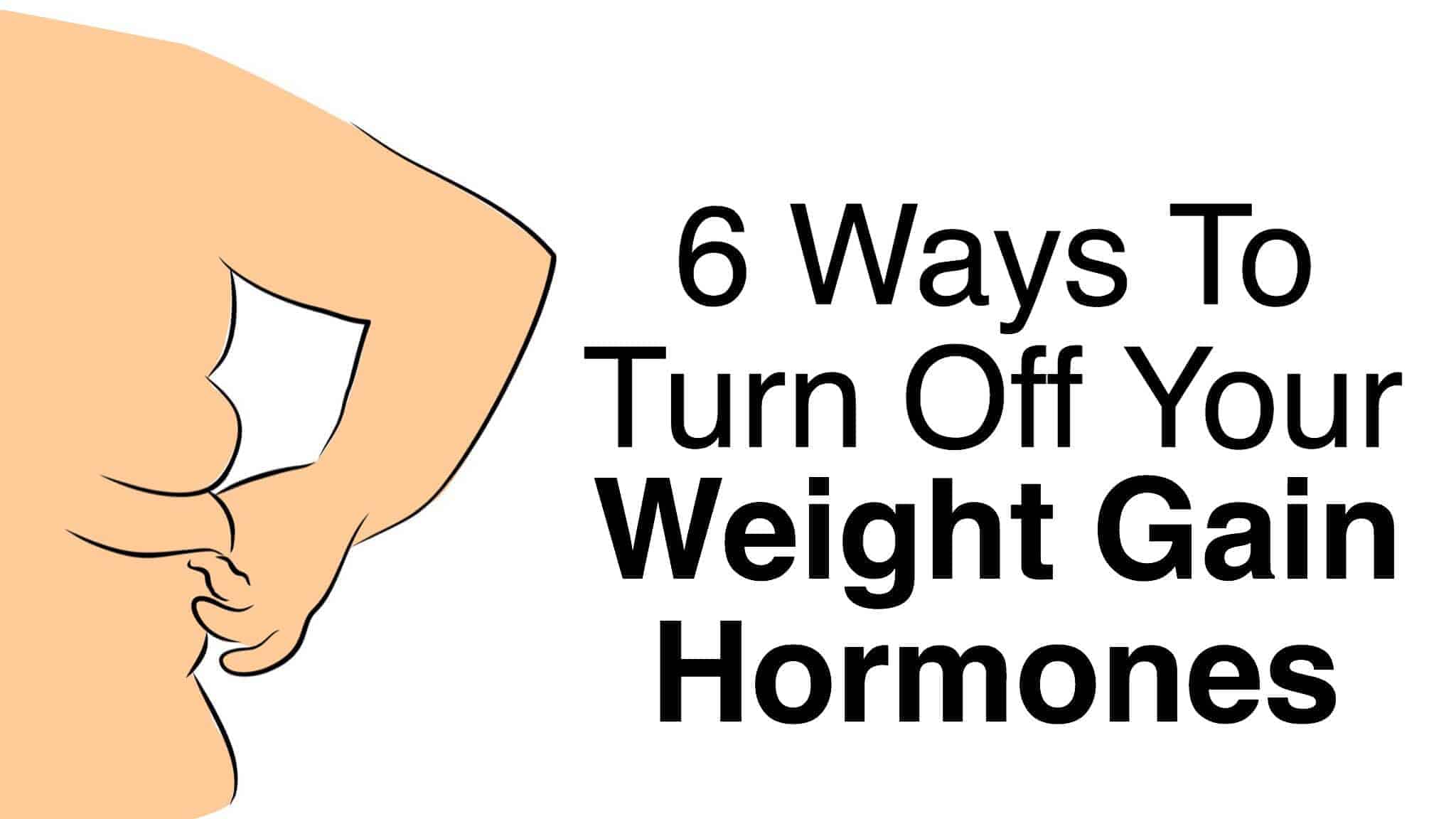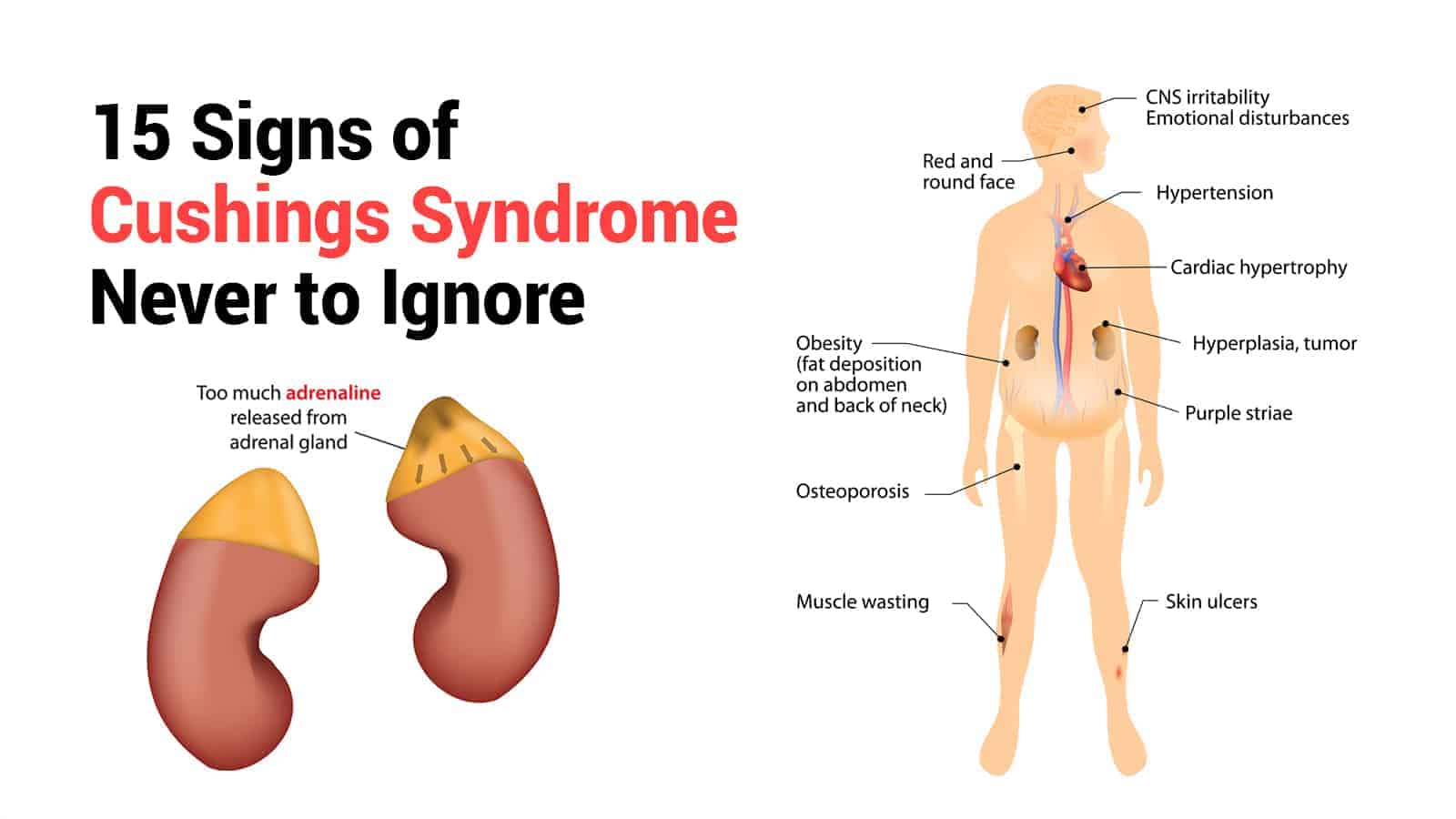Cushings syndrome is a symptom that affects many parts of the body. Unfortunately, the worst part of it is the part that everyone can see – the changes in physical appearance. When a person has this syndrome, there is nothing they can do to hide it.
One good thing about the syndrome is that it’s reversible. Catching it early is best before all the embarrassing physical changes take place or before it causes worse problems in the body. To catch it early, people need to know what signs and symptoms to look for.
This guide will tell you everything you need to know about this rare syndrome. Plus, we’ll reveal the first signs of Cushing’s syndrome you should never ignore.
What is Cushings Syndrome?
Named after Henry Cushing, an American neurosurgeon who pointed out the condition in 1912, this is a syndrome that is caused by long-term exposure to excessive levels of cortisol. Cortisol is a hormone made by the adrenal glands, located right on top of the kidneys. You may have heard of cortisol before during discussions of obesity.
Physical Changes from the Syndrome
 Cushing’s essentially makes a person look obese but in a more “deformed” way. Thin arms and legs characterize the condition, but a large midsection with an extended abdomen may hang low. They may have a rounded face and a fatty hump in the middle of their upper back near the neck. They can have excess fat around their neck
Cushing’s essentially makes a person look obese but in a more “deformed” way. Thin arms and legs characterize the condition, but a large midsection with an extended abdomen may hang low. They may have a rounded face and a fatty hump in the middle of their upper back near the neck. They can have excess fat around their neck
The syndrome causes a person’s body to look unsightly, leading to low self-esteem, withdrawal from people, and depression. However, since Cushing’s is reversible, so are the physical effects from it (maybe not entirely in some cases, but enough for the person to feel better about themselves).
Other Problems Caused by Cushing’s Syndrome
A person’s physical appearance is not the worst part of this syndrome, even if they feel like it is. The syndrome can cause significant health problems, many of them associated with being obese, although the person did not gain the weight of their own accord. Some of these problems include (but are not limited too):
- Thin skin that bruises easily
- Lack of muscle strength
- Fatigue
- Trouble sleeping
- High blood pressure
- Loss of bone density
- Menstrual changes
- Excessive body hair growth in women
- Women may start looking more “masculine.”
- Diabetes
Living with Cushings syndrome can be an absolute nightmare. That is why the signs and symptoms shouldn’t be ignored, especially when it’s a syndrome you don’t have to live with. The next section has the signs and symptoms you should look out for.
Statistics on Cushing’s Syndrome
*Statistics provided by the American Association of Neurological Surgeons (AANS)
- 10-15 per million people are affected every year
- Most commonly affects adults ages 20-50
- Women make up about 70% of cases of the disorder
- Most cases of Cushing’s syndrome are caused by corticosteroid medications
15 First Signs of Cushing’s Syndrome You Should Never Ignore
1. Weight gain.
Not only should you not ignore the weight gain, you probably will not be able to ignore it because it will be so significant. It can be extreme, especially for women. It can be even more alarming if you know you don’t overeat, but you’re becoming obese. It’s a clear indicator that something is wrong.
The weight gain will happen around your midsection while your legs and arms remain small. You may also gain weight in your neck and face. It can be especially alarming when you know you aren’t overeating.
 2. Moon face.
2. Moon face.
Moon face is a descriptive term used to describe how the face begins to look. Extra fat starts building up on the side of the face, causing it to have a rounded, plumper appearance. It’s sometimes also called a Cushingoid appearance.
Moon face can also cause other skin conditions, some of which are mentioned further along the list. You may notice that you have to perform extra skincare steps in your routine to keep your skin healthy.
3. Hump on your upper back.
The syndrome causes fatty deposits to collect in the middle of your upper back near the neck. This leads to what laypeople describe as a “buffalo hump.” Over time, these humps can become significantly pronounced and possibly even prevent you from holding your head up straight. It’s not something you can ignore.
4. Weak muscle legs.
The syndrome causes a weakening of the muscles, especially in the legs. Unfortunately, this muscle weakness could persist even if you get rid of the syndrome. That makes it more critical than ever to get tested and treated early before the muscle weakness becomes irreversible.
5. Purple stretch marks.
Stretch marks are common, especially on overweight people. However, if your stretch marks are purple, you should be concerned. These stretch marks most commonly appear on the breasts, arms, abdomen, and thighs.
6. Oily skin/Acne
The syndrome can cause oily skin, which is precisely what causes acne. Even if you’ve had a history of dry skin, you may suddenly have oily skin. A sudden switch from dry to oily is a significant indicator of the possibility of Cushing’s syndrome.
7. Red face.
Along with moon face, your face may become redder than usual, especially on your cheeks. This is known as cutaneous flushing in the scientific community. The flushing is not so much about the color of the skin. It occurs because the syndrome encourages additional blood flow to the face.
8. Face is warm to the touch.
This also occurs from the cutaneous flushing. The additional blood flow causes the face to warm up. This is a vital sign for dark-skinned people who may not see the redness in their face. The warmth gives it away.
9. Osteoporosis
Osteoporosis is a syndrome on its own, so it can be tricky to figure out that it’s being caused by Cushing’s syndrome. However, if you have osteoporosis along with some of these other symptoms in the list, then you should get tested for Cushing’s syndrome.
10. High blood sugar.
Hypercortisolism (the name for excessive cortisol) impedes the action of insulin in the body. This can lead to high blood sugar levels. If this isn’t taken care of, you can develop secondary diabetes.
You’ll need to recognize the symptoms of high blood sugar to realize something is wrong. This can include frequent thirst, frequent urination, fruity-smelling breath, fatigue, and dry mouth.
11. Slower growth rate in kids.
Kids suffering from Cushings syndrome may be obese, but the rest of their growth could be stunted. The child’s pediatrician would likely recognize this symptom even if you don’t bring it up. However, that does require regular doctor visits, so it’s essential to keep up with the child’s appointments.
12. Extra facial and body hair.
While this can affect men, it affects women more. They may experience hair growth in strange places on their body. This can include the face, neck, chest, abdomen, and thighs. This is due to Cushing’s causing an increase in the production of a hormone called androgens. Androgens are responsible for male characteristics in the body.
13. Mood changes.
It makes sense that if someone’s body is changing before their very eyes, and negatively at that, they would be moody. However, with Cushing’s syndrome, some people can develop real psychiatric problems. Depression is common, but it can get as bad as psychosis (rare).
14. Erectile dysfunction.
This symptom that affects men can happen due to secondary causes. Obesity, diabetes, high blood pressure, depression, and many of the other signs on the list can all contribute to erectile dysfunction. Add that to the hormone disruption caused by Cushing’s in the first place, and it’s a recipe for erectile dysfunction.
15. Difficulty getting pregnant.
Cushing’s syndrome can cause a woman to seem infertile. This is because the syndrome affects the menstrual cycle. It can make it occur randomly or not at all. Plus, the secondary conditions that Cushing’s causes, such as diabetes and high blood pressure, all contribute to difficulties with conceiving.
 Final Thoughts About Cushing’s Syndrome
Final Thoughts About Cushing’s Syndrome
Cushing’s syndrome doesn’t start as a condition that significantly impedes your life. It’s a slow-developing condition, so it can be easy to miss the signs at first. However, when they start showing up, especially if you have more than one, you should see a doctor right away.
Getting treatment right away for the syndrome gives you the best chance of reversing all the symptoms and damage caused by it. When treated early, it could be treated with medications rather than surgery. Keep an eye on your body and your health, and if you see any signs of Cushing’s Syndrome, don’t hesitate to get tested

















